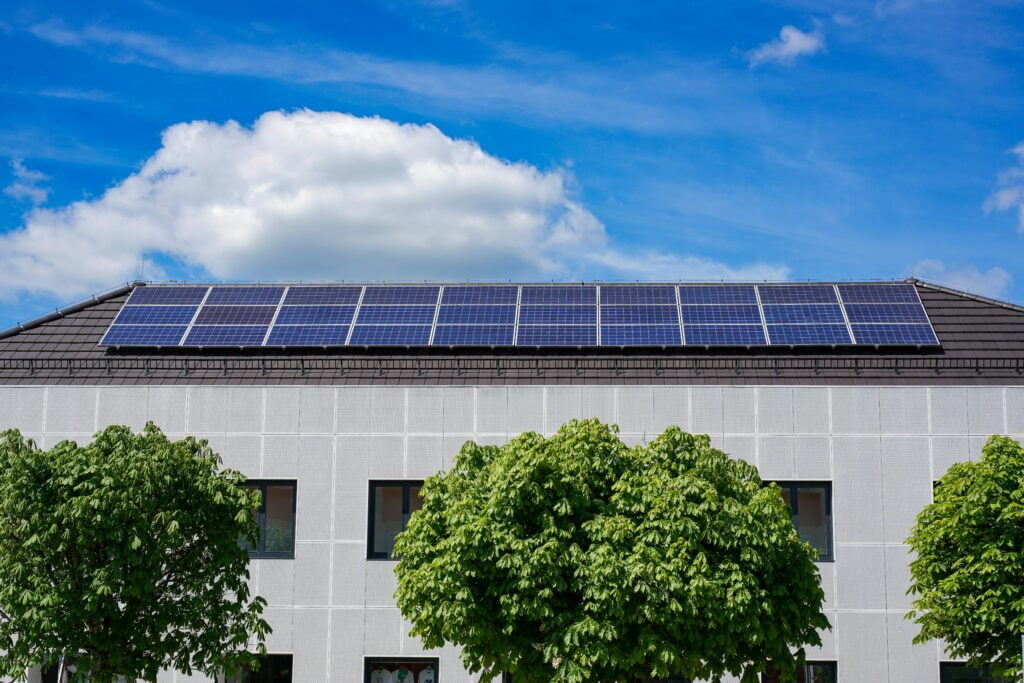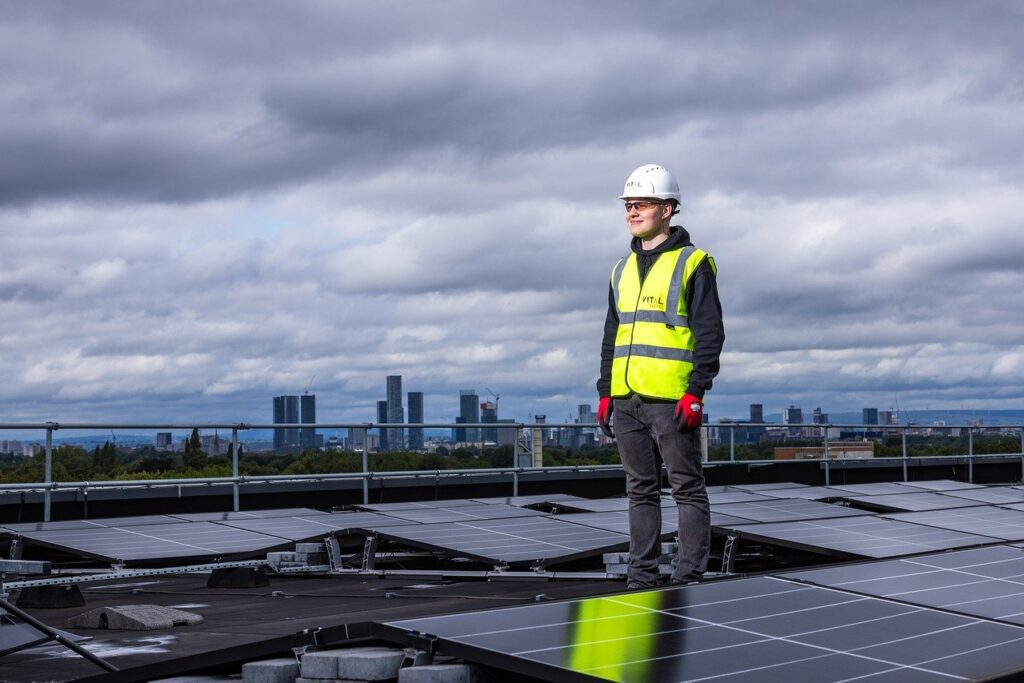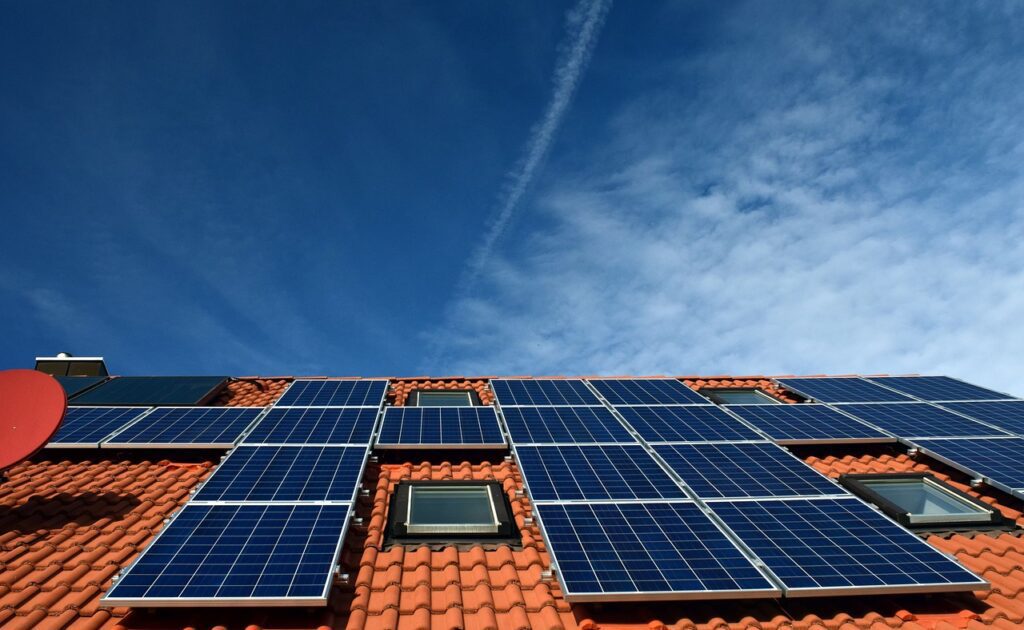5 Powerful Ways Solar Energy Will Conquer Mars Colonization
Imagine a future where humans live on Mars, a planet millions of miles away from Earth. This vision, once a mere fantasy, is becoming more achievable thanks to advancements in technology, particularly in solar power.
Solar energy, a clean and renewable resource, could be the key to making life on the Red Planet possible. By utilizing the abundant sunlight on Mars, we can generate electricity, support life, and create sustainable habitats for future colonists.

Colonizing Mars is not just about getting there; it’s about surviving and thriving in a harsh environment. Solar power offers a practical solution to many of the challenges we will face, from providing energy for daily needs to enabling scientific research.
In this article, we will explore how solar power can make Mars colonization a reality, looking at the technology, benefits, and future prospects of using solar energy on Mars.
The Abundance of Solar Energy on Mars
Mars, often referred to as the Red Planet, is bathed in sunlight, much like Earth. Although it is farther from the Sun, it still receives ample sunlight, making solar energy a viable option. The Martian day, known as a sol, is approximately 24.6 hours, which means there is a consistent pattern of daylight and darkness. This regularity is crucial for planning and utilizing solar power efficiently.
Solar Radiation on Mars:
While the intensity of solar radiation on Mars is about 43% that of Earth, it is still sufficient to generate significant amounts of electricity. The thin atmosphere of Mars, composed mostly of carbon dioxide, allows more sunlight to reach the surface compared to Earth. This means solar panels can be highly effective in converting sunlight into usable energy.
Daylight Availability:
Mars experiences seasonal variations similar to Earth, affecting the length of days and nights. However, even during the shortest days, there is enough sunlight to charge batteries and power essential systems. The poles experience extreme variations, with long periods of daylight in summer and prolonged darkness in winter, but this can be managed with strategic placement of solar arrays and energy storage systems.
Advantages of Solar Power for Mars Colonization
Solar power presents numerous benefits for establishing and maintaining a human presence on Mars. These advantages range from environmental sustainability to practical implementation and long-term viability.
Clean and Renewable Energy Source
Solar power is a clean and renewable energy source, which is crucial for maintaining a sustainable environment on Mars. Unlike fossil fuels, which produce harmful emissions, solar energy generates electricity without polluting the atmosphere. This is vital for preserving the delicate balance of the Martian environment and ensuring that our presence does not negatively impact the planet’s ecosystem.
Reliability and Efficiency
Solar panels have proven to be reliable and efficient in various space missions. NASA’s Mars rovers, such as Opportunity and Spirit, have used solar power to operate for years beyond their expected lifespans. The technology has demonstrated its durability and ability to function in the harsh Martian environment, making it a trustworthy option for long-term missions and colonization efforts.
Energy Independence
By harnessing solar energy, Mars colonies can achieve a level of energy independence. Unlike Earth, where energy sources may need to be transported or imported, solar power can be generated on-site. This reduces the need for constant supply missions from Earth, lowering costs and increasing the sustainability of the colony. With the right infrastructure, settlers can produce all the energy they need from the sunlight available on Mars.
Scalability and Adaptability
Solar power systems can be scaled up or down based on the needs of the colony. Whether it’s a small research outpost or a large, thriving community, solar panels can be added or reconfigured to meet energy demands. This adaptability makes solar power an ideal choice for the evolving needs of a Martian settlement.
Cost-Effectiveness
The initial investment in solar power infrastructure may be high, but the long-term benefits far outweigh the costs. Once installed, solar panels have low maintenance requirements and can generate electricity for decades. This cost-effectiveness is essential for sustainable colonization, ensuring that resources are used efficiently and effectively.
Technology Required to Harness Solar Power on Mars
Establishing a solar power infrastructure on Mars involves several advanced technologies. These technologies must be robust, efficient, and capable of functioning in the Martian environment. Here are the key components and innovations necessary for harnessing solar power on Mars.

Solar Panels
Photovoltaic Cells:
The core technology behind solar power is photovoltaic (PV) cells, which convert sunlight into electricity. These cells are made from semiconductor materials, typically silicon, that generate an electric current when exposed to sunlight. For Mars, PV cells need to be optimized for lower light levels and the specific spectrum of sunlight that reaches the planet’s surface.
Dust-Resistant Panels:
Mars is known for its frequent dust storms, which can cover solar panels and reduce their efficiency. To combat this, researchers are developing dust-resistant coatings and self-cleaning mechanisms. These innovations will ensure that solar panels remain operational even during and after dust storms, maintaining a consistent energy supply.
Energy Storage Systems
Batteries:
Storing solar energy is critical for periods when sunlight is not available, such as during the night or dust storms. Advanced battery technologies, such as lithium-ion or solid-state batteries, will be essential. These batteries need to be durable and capable of operating in the extreme temperatures of Mars.
Thermal Storage:
Another method to store energy is through thermal storage, which involves capturing and storing heat from the sun. This heat can then be used to generate electricity or provide warmth during cold Martian nights. Thermal storage systems can complement batteries, providing a reliable energy supply.

Solar Array Deployment
Flexible and Lightweight Panels:
Transporting materials to Mars is expensive and challenging. Therefore, solar panels designed for Mars must be lightweight and compact. Flexible solar panels, which can be rolled up and easily transported, are a promising solution. These panels can be quickly deployed and expanded to create large solar arrays.
Robotic Installation and Maintenance:
Robotic systems will play a crucial role in the installation and maintenance of solar arrays. Robots can handle the harsh conditions on Mars and perform tasks that would be difficult or dangerous for humans. These robots will deploy solar panels, clean them, and make necessary repairs to ensure the continuous operation of the solar power system.
Challenges and Solutions for Implementing Solar Power on Mars
Harnessing solar power on Mars comes with unique challenges that need innovative solutions. Here, we explore the primary obstacles and how we can overcome them to ensure a steady and reliable energy supply.

Dust Storms
Challenge:
Mars experiences frequent and intense dust storms that can cover solar panels with a layer of dust, significantly reducing their efficiency. These storms can last for weeks, posing a threat to the continuous generation of solar power.
Solution:
To address this, scientists are developing dust-resistant coatings for solar panels that repel dust particles. Additionally, self-cleaning mechanisms, such as vibration systems or robotic wipers, can be employed to keep the panels clean and operational during and after dust storms. Monitoring systems can detect dust accumulation and activate cleaning processes automatically.

Temperature Extremes
Challenge:
Mars has extreme temperature variations, ranging from as high as 20°C (68°F) during the day to as low as -125°C (-195°F) at night. These fluctuations can affect the performance and durability of solar power systems and batteries.
Solution:
Solar panels and batteries designed for Mars need to be built with materials that can withstand these temperature extremes. Advanced thermal management systems, including insulation and heat regulation technologies, can protect sensitive components from temperature-induced damage. Thermal storage systems can also help by storing heat during the day and releasing it at night to maintain optimal operating temperatures.
Limited Sunlight During Winter
Challenge:
During the Martian winter, especially near the poles, the amount of sunlight is significantly reduced. This limits the ability of solar panels to generate sufficient energy.
Solution:
Strategic placement of solar arrays in equatorial regions, where sunlight is more consistent throughout the year, can mitigate this issue. Additionally, energy storage solutions like high-capacity batteries and thermal storage systems can store excess energy generated during the summer months for use during the winter. Hybrid systems that combine solar power with other energy sources, such as small nuclear reactors, can provide a backup during periods of low sunlight.
Future Prospects and Potential Advancements in Solar Power for Mars Colonization
As we continue to explore and prepare for human colonization of Mars, the future of solar power holds immense promise. Advancements in technology and innovative solutions will play a crucial role in ensuring the sustainability and success of Mars settlements.
Advanced Solar Technologies
High-Efficiency Solar Panels:
Future developments in photovoltaic technology are expected to yield solar panels with much higher efficiency rates. These panels will be able to convert a greater percentage of sunlight into electricity, making them more effective in the lower light conditions on Mars. Research into new materials and designs, such as multi-junction solar cells, could revolutionize solar power generation for Martian colonies.
Flexible and Lightweight Solar Arrays:
Innovations in materials science will lead to the creation of more flexible and lightweight solar panels. These panels can be easily transported and deployed, reducing the logistical challenges of setting up a solar power infrastructure on Mars. Additionally, modular solar arrays that can be expanded as needed will provide scalability to meet the growing energy demands of a developing colony.
Enhanced Energy Storage Solutions
Next-Generation Batteries:
The development of next-generation batteries, such as solid-state batteries and advanced lithium-sulfur batteries, promises greater energy storage capacity, longer lifespan, and improved safety. These batteries will ensure a reliable energy supply during periods of low sunlight and help manage the power needs of the colony effectively.
Integrated Energy Storage Systems:
Combining different energy storage methods, such as batteries and thermal storage, into integrated systems will provide more flexibility and reliability. These systems can store excess solar energy during the day and release it when needed, ensuring a continuous power supply for critical systems and activities.
Autonomous Maintenance and Repair
Self-Healing Materials:
Research into self-healing materials could lead to solar panels that can automatically repair minor damages caused by the harsh Martian environment. These materials would increase the durability and lifespan of solar power systems, reducing the need for frequent maintenance and repairs.
Autonomous Drones and Robots:
The use of autonomous drones and robots for maintenance and repair tasks will become more prevalent. These machines can perform regular inspections, clean solar panels, and make necessary repairs without human intervention. This will ensure that solar power systems remain operational and efficient with minimal human effort.
Sustainable Habitat Integration
Energy-Efficient Habitats:
Designing energy-efficient habitats that minimize power consumption will be essential for sustainable living on Mars. Advanced insulation, efficient heating and cooling systems, and smart energy management technologies will reduce the overall energy demand, allowing solar power systems to meet the colony’s needs more effectively.
Solar-Powered Greenhouses:
Agriculture will be a critical component of a self-sustaining Martian colony. Solar-powered greenhouses can provide the necessary light and warmth for growing food. Innovations in hydroponics and artificial lighting will enhance crop yields, ensuring a steady food supply for the inhabitants.
Conclusion
The dream of colonizing Mars is becoming increasingly tangible, with solar power playing a pivotal role in making this vision a reality. By harnessing the abundant sunlight on Mars, we can generate clean and renewable energy to support life, power essential systems, and create sustainable habitats. Despite the challenges, advancements in solar technology, energy storage, and autonomous maintenance will ensure a reliable and efficient power supply for future Martian colonies.
Solar power offers numerous advantages, such as environmental sustainability, cost-effectiveness, and scalability, making it the ideal energy source for Mars. The use of solar power will not only support human life but also enable scientific research and technological advancements on Mars. The continuous development of solar technologies and innovative solutions will pave the way for successful and sustainable colonization of the Red Planet.
As we continue to innovate and explore, solar power will remain at the forefront of our efforts to establish a human presence on Mars. The possibilities are endless, and with each step forward, we move closer to a future where living on the Red Planet is not just a dream, but a reality.
FAQ
1. How does solar power compare to other potential energy sources for Mars?
Solar power is currently the most viable and sustainable energy source for Mars due to its abundance and renewability. Other potential energy sources, such as nuclear power or wind energy, have their own challenges and limitations. Nuclear power requires complex and heavy infrastructure, while wind energy on Mars would be limited by the thin atmosphere. Solar power, on the other hand, is relatively easy to deploy and maintain, making it the best choice for initial colonization efforts.
2. What happens during prolonged dust storms?
During prolonged dust storms, the efficiency of solar panels can be significantly reduced due to the accumulation of dust. To mitigate this, solar panels will be equipped with dust-resistant coatings and self-cleaning mechanisms. Additionally, energy storage systems, such as high-capacity batteries and thermal storage, will ensure a continuous power supply during periods of reduced sunlight.
3. How will solar power support life support systems on Mars?
Solar power will provide the energy needed for essential life support systems, such as air and water purification, heating, and cooling. Solar-powered greenhouses will enable food production, ensuring a steady food supply for the inhabitants. Reliable energy from solar panels will also support communication systems, scientific research, and everyday activities, making life on Mars sustainable.
4. Can solar power be used for transportation on Mars?
Yes, solar power can be used for transportation on Mars. Solar-powered rovers and vehicles can be charged using solar panels, providing a clean and efficient means of transportation. This will be particularly useful for exploring the Martian surface and conducting scientific missions.
5. What are the long-term prospects for solar power on Mars?
The long-term prospects for solar power on Mars are promising. As technology continues to advance, solar panels will become more efficient and durable, capable of meeting the growing energy demands of expanding colonies. Future developments in energy storage and autonomous maintenance will further enhance the reliability of solar power systems. Solar power will remain a cornerstone of sustainable living on Mars, supporting human presence and scientific exploration for decades to come.
Efficient Energy Transmission
Challenge:
Transmitting the generated solar power efficiently across a Martian colony, especially if it spans large distances, can be challenging due to potential energy losses and the harsh environment.
Solution:
Developing a robust and efficient power grid for Mars is essential. This grid would use advanced materials that minimize energy loss during transmission. Wireless power transmission technologies, such as microwave or laser-based systems, can also be explored to transmit energy over long distances without the need for extensive cabling. Redundant systems and smart grid technologies can ensure reliable energy distribution even in the event of a component failure.
One Response